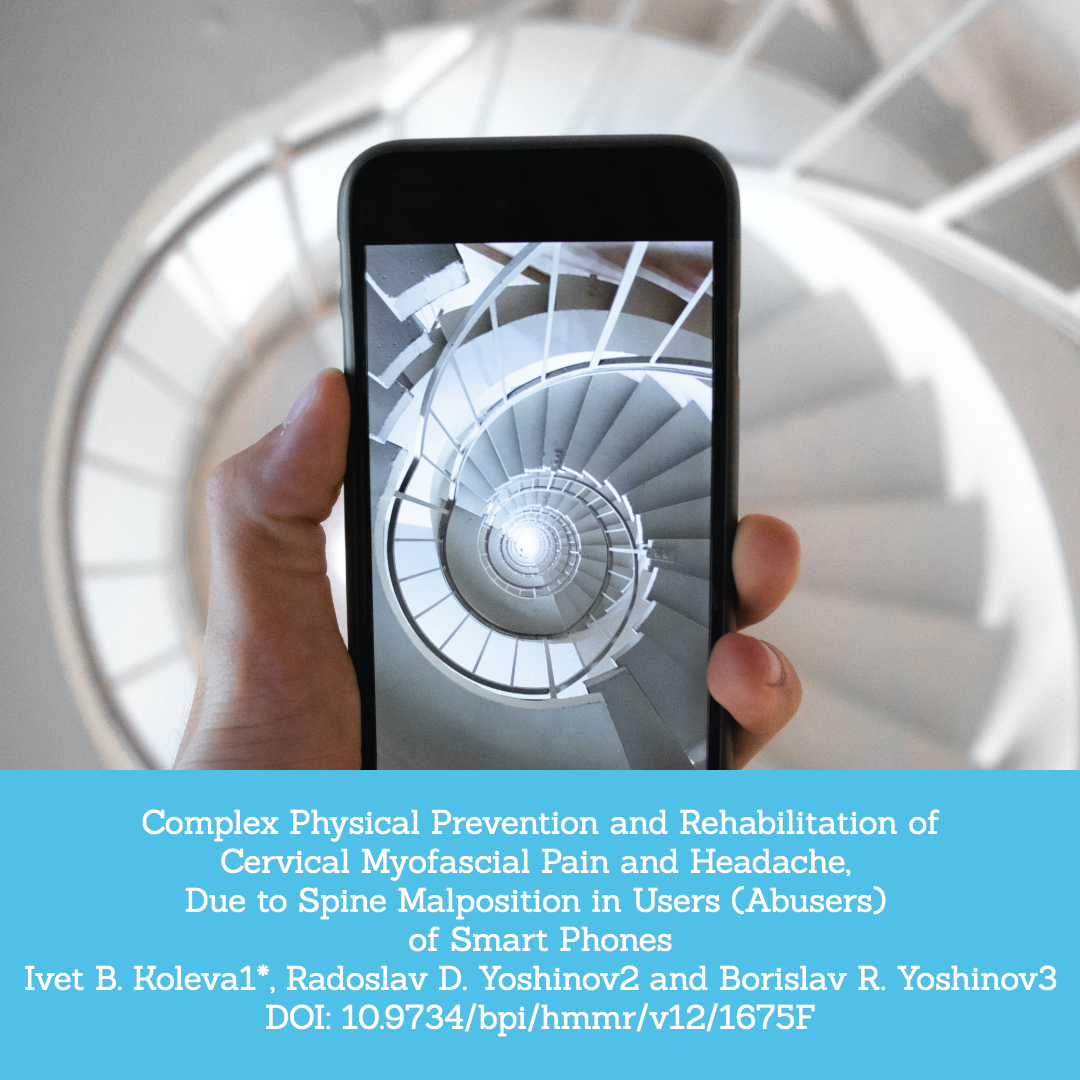Complex Physical Prevention and Rehabilitation of Cervical Myofascial Pain and Headache, Due to Spine Malposition in Users (Abusers) of Smart Phones
Ivet B. Koleva1*, Radoslav D. Yoshinov2 and Borislav R. Yoshinov3 DOI: 10.9734/bpi/hmmr/v12/1675F
DOWNLOAD FULL PDF
ABSTRACT
Introduction:
The introduction of portable devices in the everyday life imposed the necessity to evaluate the possible consequences (of the abuse) on the spine and on the central nervous system, respectively to create programs for the prevention of these consequences. The goal of current article is to evaluate the impact of different physical modalities (including physiotherapy, ergotherapy, manual therapy, deep oscillation, lasertherapy, magnetic field) in the prevention and the complex rehabilitation of the onset of cervical myofascial pain and headache, due to spinal malposition in users (abusers) of smart phones.
Material and Methods:
We observed a total of 165 patients with cervical myofascial pain and headache, divided into 5 groups (of 33 patients each). The age of the patients was between 19 and 50 years, with posture (position) alterations of the cervical spine, but without significant cervical pathology. All patients used a mobile device in their everyday activities (minimum 2 hours daily) for at least 6 months. Functional evaluation was effectuated before, during and after treatment, and one month after the end of the rehabilitation. In all patients we applied a complex physical-therapeutic program (PT), including analytic exercises for paravertebral muscles and soft tissue techniques [massages, post-isometric relaxation (PIR) for the respective upper trapezius and sterno-cleidomastoideus muscle] and stimulation of patients’ active participation in the process of prevention (education in principles of back-school, self-massage, auto-PIR). The patients in the first group effectuated only these procedures. In the second group, we added elements of manual therapy (MT - tractions, mobilizations, manipulations; and auto-mobilizations). In patients of the next groups, a paravertebral application of a preformed modality was added to the PT and the MT: in group 3 – Deep Oscillation (DO); in group 4 – lasertherapy (LT); in group 5 - magnetic field (MF). Statistical evaluation was performed by SPSS programme, version 17; using t-test (analysis of variances ANOVA) and Wilcoxon rank test (non-parametrical correlation analysis).
Results and Analysis:
All patients reported a significant decrease of the intensity of cervical pain and headache (evaluated by Visual analogue scale of pain and by pressure dolorimetry). In all patients we observed amelioration of the static position of the cervical spine, reduced amount of paravertebral muscle spasm and of the sensibility of trigger and tender points; and augmentation of range of active motion of the cervical region of the spine. During the rehabilitation period the results were most important in the second group (with manual therapy), but one month later there is not statistical differences between both groups.
Discussion and Conclusion:
Techniques of PT and MT are very useful for the prevention and the rehabilitation processus of cervical myofascial pain and headache. The program of care includes active (analytic) exercises, PIR and stretching techniques, tractions and mobilizations, education of the patient, and (in some cases) manipulations. The inclusion of preformed modalities (DO, LT, MF) in the complex prevention and rehabilitation program accelerates the effects on pain and spine mobility and ameliorate the stabilization of the results. We consider that every medical doctor - specialist in Physical and rehabilitation medicine, every physiotherapist and ergotherapist must adapt the general algorithm for the needs of the patient.
Keywords: Physical modality; physiotherapy; manual therapy; lasertherapy, magnetic field; myofascial pain; cervicogenic headache; tension type headache; kinesiological analysis.


